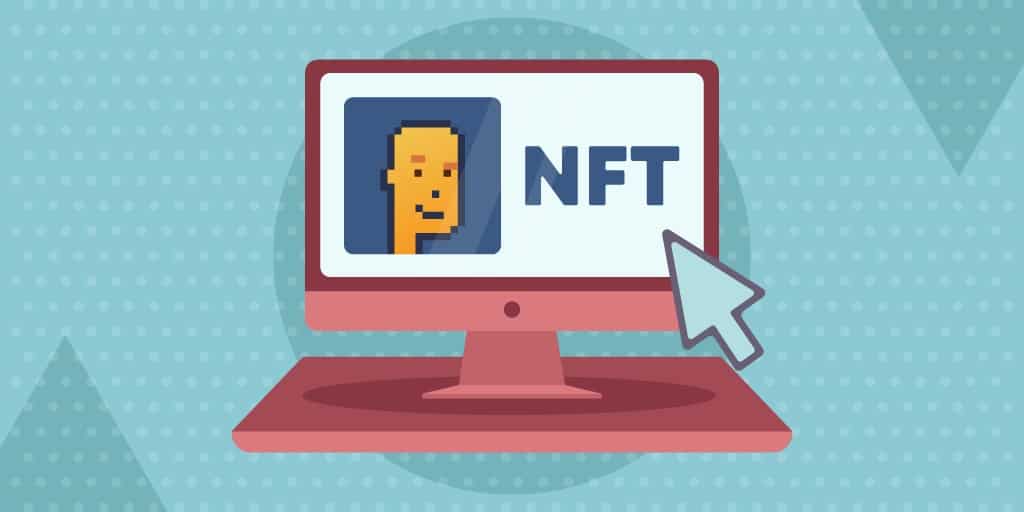On a blockchain, non-fungible tokens (NFTs) are digital assets. that can be distinguished from one another by their unique identification codes and metadata.
Imagine paying a fair price for a piece of digital art online and receiving a unique digital token that verifies your ownership of the purchase; that is how NFTs work. NFTs cannot be traded or exchanged for equivalent amounts as cryptocurrencies are able to do so. Contrast this with fungible tokens, like cryptocurrencies, which can be used as a medium for commercial transactions because they are interchangeable. NFTs can be anything digital (such as music, paintings, or drawings), but the current buzz centers on using technology to market digital art. It can also serve as a representation of people’s identities, property rights, and other things.
NFTs have been around for quite some years, but they are only now becoming well-known because they are a more common way to buy and sell digital art. A startling $41 billion was spent on the NFT market in just 2021, almost as much as was spent on the entire world’s fine art market.
They have a variety of potential applications. They are the perfect means of digitally representing physical assets, like art work, music and real estate. NFTs can also be used for identity management or to cut out intermediaries and link artists with audiences. NFTs can eliminate distributors, streamline transactions, and open up new markets.
1.How Does NFT Work?
The blockchain, a distributed public ledger used to record transactions, is where most NFTs are found. NFTs are discrete tokens that contain priceless information.
They can be purchased and sold similarly to other physical art forms because the market and demand primarily determine their value.
It is simple to confirm and validate the ownership of NFTs and the transfer of tokens between owners thanks to their specific data.
Additionally, they receive sole ownership rights. Because NFTs use blockchain technology, verifying ownership and transferring tokens between owners is simple. NFTs can only have one owner at a time. The metadata of an NFT can also contain specific data that the creator stored. Artists, for example, can sign their works of art by entering their signatures in the file.
2.Understanding NFT and taxes
NFTs are taxable, but it can be challenging to determine how the IRS views them regarding taxation. The IRS has stated that virtual currencies like Bitcoin and Ether are subject to property taxes, despite not providing explicit guidance on NFTs.
NFTs can be used in various ways, whether you want to build your collection or buy a piece of art for your cryptocurrency wallet. However, a few factors will determine the tax implications: What you did with the NFTs you own, whether you’re a creator or an investor. It’s also crucial to remember that the IRS still needs to provide guidance specific to NFTs, so you should consult a knowledgeable tax advisor.
You won’t have to pay taxes if you’re making or trading NFTs until the NFT is actually sold. The same rules apply to anyone who creates something, like a painting, in the case of a creator. They only make money on the production once they sell that painting, not before. That income will be considered ordinary income and ruled by same taxation as other wages.
You must report gains and losses on your yearly tax return if NFTs are taxed as property similar to cryptocurrencies like Bitcoin. The IRS will anticipate a portion of your virtual currency or NFT profits. How long you owned the asset, in addition to your taxable income, determines your tax rate. On the other hand, you can typically write off losses to counteract capital gains.
3.How Buying NFTs Taxed?
There are numerous ways to buy NFTs. The largest NFT market is OpenSea, and Ethereum is the most popular platform for NFT sales. On the Ethereum blockchain, content producers create and store original works of digital art. Then, investors purchase and sell them on the market, and the technology enables secure, genuine record-keeping regarding transaction histories and ownership rights.
Tax obligations are not incurred when buying an NFT with conventional currency, but when using cryptocurrency, things change. You might owe taxes if the cryptocurrency you’re using to make the purchase has increased in value since you first acquired it because you’re using one type of property to buy another.
4.Taxation rules if you receive NFTs as a gift
You will only be taxed once if you choose to sell an NFT for a profit after receiving it as a gift. If you are giving someone else an NFT, be aware that American taxpayers benefit from an annual gift tax exclusion, which in 2022 amounts to $16,000 per recipient. As of 2022, there is also a lifetime exclusion of about $12 million. You must report the difference on your tax return if the sum of your gifts to one person during this calendar year, including NFTs, exceeds $16,000.
5.Important things to Know
Keep your NFTs for a minimum of a year. Once more, rates on long-term capital gains are generally more benevolent. In the long run, depending on your income and filing status, you might pay 0%, 15%, or 20%. On the other hand, short-term rates can reach 37%.
It can be challenging to navigate the relatively new world of NFTs, particularly when taxes are involved. Time will tell how the IRS manages these assets in the end, but for the time being, it appears that they will be treated as property (or, in some cases, collectibles). Call us for assistance if you’re unsure how to include NFT sales and profits in your tax filing.


Recent Comments